 A Snake in the Barley (An Owen Archer mystery Book 15) by Candace Robb
A Snake in the Barley (An Owen Archer mystery Book 15) by Candace Robb Format: eARC
Source: supplied by publisher via Edelweiss
Formats available: hardcover, ebook
Genres: historical fiction, historical mystery
Series: Owen Archer #15
Pages: 325
Published by Severn House on December 3, 2024
Purchasing Info: Author's Website, Publisher's Website, Amazon, Barnes & Noble, Kobo, Bookshop.org, Better World Books
Goodreads
Where is taverner Tom Merchet? Owen Archer unearths a series of troubling secrets and a dangerous foe intent on retribution when his good friend goes missing.
"A standout . . . Robb reinforces her place among the top writers of medieval historicals" - Publishers Weekly Starred Review
York, 1377. Owen Archer is determined to find his friend, taverner Tom Merchet, who has been missing for five days. His wife, Bess, is frantic with worry.
AN ENIGMATIC STRANGER.
Who is the elusive Widow Cobb that Tom was seen visiting? And who is the man spotted following Tom before he vanished? As Owen hunts for clues, Bess decides to visit the widow’s lodgings and makes a terrifying discovery.
RETRIBUTION IS BREWING . . .
Owen digs up past sins and long-buried secrets that answer some of the questions surrounding Tom’s disappearance. But who is the sly and malevolent figure intent on destroying his friend, and why? A shocking confession will rock Owen to his core . . .
An action-packed, evocative and masterfully plotted medieval mystery in the critically acclaimed Owen Archer series, perfect for fans of C.J. Sansom, Ellis Peters and Paul Doherty.
My Review:
 The previous entry in this marvelous long-running series, A Fox in the Fold, was all wrapped up in Owen Archer’s past. This current entry dives deeply into the past of Owen and Lucie Archer’s friend and neighbor, tavernkeeper Tom Merchet.
The previous entry in this marvelous long-running series, A Fox in the Fold, was all wrapped up in Owen Archer’s past. This current entry dives deeply into the past of Owen and Lucie Archer’s friend and neighbor, tavernkeeper Tom Merchet.
At the heart of this particular mystery is something that almost seems foreign to us in this era of instant communication and always available – if not always true – information. The past is another country, as the saying goes, and they do things differently there. One of the things that is very different is just how easy it could be to reinvent yourself – for good or ill – by moving a distance that doesn’t seem all that far to us, but represented a significant investment in time, money and danger in Owen Archer’s – and Tom Merchet’s – late 14th century.
Owen Archer, his wife Lucie, and his neighbors and good friends Tom and Bess Merchet, are all middle-aged by this point in the series (1377) which began in 1363 in The Apothecary Rose. Owen wears his past on his face in the form of an eyepatch that covers the wound that saw him mustered out of the King’s Archers and into a life as the King’s wandering investigator.
But Tom Merchet’s past has remained firmly down the road both literally and figuratively, in places and people he left behind and buried before Owen came to York to investigate whether – or not as the case turned out to be – Lucie murdered her late husband.
Everyone in York knows that Tom lost his first wife and child, and very nearly the York Tavern along with them. And that Bess saved him and the tavern both with her skills as a cook and manager, and that they grew together into a happy and loving marriage.
But their peace has been disturbed by a series of unfortunate and downright strange events. Someone is digging holes around their property. Tom has been skulking about town at odd hours, visiting strangers suspected of theft – and worse. Bess is sure it’s all tied to a past that Tom has always refused to talk about – and that whatever happened then has come back to haunt him now – and that it’s taken him away from her. Possibly for good. Meaning for something very, very ill indeed.
And she’s right about that. But wrong about pretty much every single thought and speculation that has led her – and her now missing husband – to this terrible pass. Because of a past that has refused to let him go.
 Escape Rating A-: I adore this series, and have since I read the very first book, The Apothecary Rose, as I myself was walking the streets of York on a trip just over OMG 30 years ago. Time does fly and some of it has been fun. The reading parts, certainly.
Escape Rating A-: I adore this series, and have since I read the very first book, The Apothecary Rose, as I myself was walking the streets of York on a trip just over OMG 30 years ago. Time does fly and some of it has been fun. The reading parts, certainly.
Reflecting back on the series, how much time it has covered both in the ‘real world’ and in Owen and Lucie’s historical York – even if it hasn’t been nearly as much time for them as it has been for us – I can’t help but think over how much has happened in both sets of those years. While at the same time marveling at just how little prior knowledge of the series a reader needs to have or remember to get into this 15th entry in it. (Meaning that you could start here but it’s all just so good you really should start at the beginning!)
It’s all down to the fact that, throughout the series, Tom Merchet has revealed little of his past. That he has one, yes. What it consisted of, what sins he’s committed, he hasn’t discussed. At all. Even with his wife.
So when Tom goes missing Owen doesn’t have any clues about where to start because Tom didn’t leave any. Owen is just as lost as we are – or the other way around! – investigating events that happened nearly two decades ago if not more, committed to and perhaps committed by a man he knows NOW but who may not much resemble the person he was THEN.
As Owen investigates, he hears conflicting reports of Tom in both the past and the present. He knows that the behavior that resulted in Tom’s near death beating in the now doesn’t make much sense even in the abstract and certainly bears no resemblance to his friend. Which doesn’t mean that the long-ago events which left behind so much enmity in Tom’s former home couldn’t have been committed by a much younger – and likely more hot-headed – version of that same man.
The heart of Owen’s investigation, the mystery he has to solve, lies in the past. A past that Tom has kept from his wife, a past that he’s ashamed of. But someone wants him dead in the present very, very badly. Someone who has left a trail of corpses behind them and then attempted to frame Tom for their deeds. Someone who obviously left Tom for dead in the hopes that the frame would fit his corpse better than it does a living man who has tales to tell.
Unless Tom has been hiding a villainous nature all along. Or a nature that was once villainous enough that he can be blackmailed now to keep it quiet. Leaving Owen to navigate his way through the rather pointy horns of multiple dilemmas, all of which must be resolved in order to bring the true villain – or villains – to justice.
And, as always in this series, it’s a delight to watch him work – especially this time around as he doesn’t begin with a clue and we get a refresher on everyone and everything all over again. Even the parts that seem familiar have to be re-examined with fresh eyes and it’s a great reminder of the bones of all the stories that have come before in the series while giving new readers a place to jump in.
The major plot of this particular story and its biggest mystery, is primarily domestic in nature this time around. But that does not mean that the roiling boil of royal politics does not touch upon York, particularly upon Owen in his semi-official position as the Princess of Wales’ agent in the North. The old king is on his deathbed, his Prince of Wales is several years in his grave, and the heir apparent is a child that all his uncles are already squabbling over – as well as over the throne on which the young Richard II-to-be will sit. If he lives that long.
The English royal family feud better known as the Wars of the Roses is about to boil over, and even in far north York, Owen Archer is likely to be in the thick of it. Hopefully in the next book or two – or maybe several! – books in the series. As one of the things I love best in this series is the author’s deft mix of Owen’s domestic business in York with the doings of the great and the mighty in London, I’m looking forward to finding out what happens on both fronts whenever the next book appears.
May it be soon!

 Love You a Latke by
Love You a Latke by 

 The December Market (Shelter Springs #2) by
The December Market (Shelter Springs #2) by  Escape Rating A-: The December Market wasn’t nearly as light and fluffy as I was expecting in a holiday romance – and it was all the better for tackling a couple of very serious topics, well, seriously, as well as having more than enough light and sparkle to kick off the holiday season’s readings.
Escape Rating A-: The December Market wasn’t nearly as light and fluffy as I was expecting in a holiday romance – and it was all the better for tackling a couple of very serious topics, well, seriously, as well as having more than enough light and sparkle to kick off the holiday season’s readings. The Teller of Small Fortunes by
The Teller of Small Fortunes by 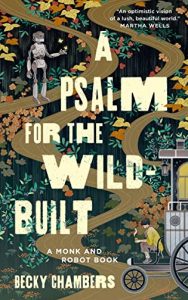 A surprising readalike for this book is
A surprising readalike for this book is  The Bloodless Princes (The Fireborne Blade, #2) by
The Bloodless Princes (The Fireborne Blade, #2) by  Escape Rating A-: The pattern of the way both books in this series are written is fascinating and more than a bit different. This story – as did
Escape Rating A-: The pattern of the way both books in this series are written is fascinating and more than a bit different. This story – as did  Art in the Blood (Sherlock Holmes Adventure, #1) by
Art in the Blood (Sherlock Holmes Adventure, #1) by  Escape Rating B+: This book has had a place deep in the virtually towering TBR pile for almost a decade – which is kind of embarrassing. I usually say that I read about 50% of the books I get – EVENTUALLY. This is apparently what that eventually looks like. To be fair, I liked this one more than enough to BUY the rest of the series that’s out so far and pick up the eARC for the forthcoming entry,
Escape Rating B+: This book has had a place deep in the virtually towering TBR pile for almost a decade – which is kind of embarrassing. I usually say that I read about 50% of the books I get – EVENTUALLY. This is apparently what that eventually looks like. To be fair, I liked this one more than enough to BUY the rest of the series that’s out so far and pick up the eARC for the forthcoming entry,  The case in Art in the Blood, while every bit as convoluted – and then some – as some of the original stories, displays a lot more confusion on Holmes’ part and frankly a lot more competence on Watson’s – a competency that calls back to Edward Hardwicke’s Doctor Watson, the partner of Jeremy Brett’s Holmes.
The case in Art in the Blood, while every bit as convoluted – and then some – as some of the original stories, displays a lot more confusion on Holmes’ part and frankly a lot more competence on Watson’s – a competency that calls back to Edward Hardwicke’s Doctor Watson, the partner of Jeremy Brett’s Holmes. The City in Glass by
The City in Glass by 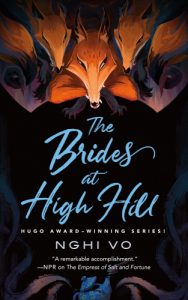 Escape Rating B: I picked this book up because I love the author’s
Escape Rating B: I picked this book up because I love the author’s 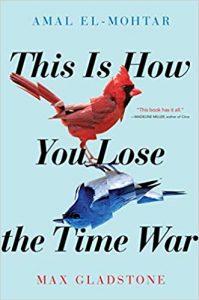 While Vitrine goes through all the stages of grief and he tries to ‘help’. And fails. Badly, frequently and often.
While Vitrine goes through all the stages of grief and he tries to ‘help’. And fails. Badly, frequently and often. The Grey Wolf (Chief Inspector Armand Gamache, #19) by
The Grey Wolf (Chief Inspector Armand Gamache, #19) by 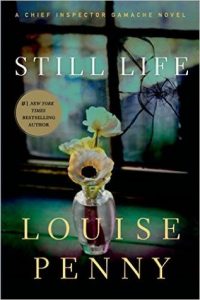 Escape Rating A: The
Escape Rating A: The  Candle & Crow (Ink & Sigil, #3) by
Candle & Crow (Ink & Sigil, #3) by 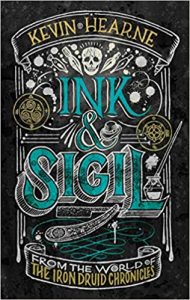 When we first met sigil agent Al MacBharrais back in
When we first met sigil agent Al MacBharrais back in  I actually read this twice, or rather I read it once and had it read to me once. The first time I read it I was sitting in the train station in Al’s native Glasgow, waiting for the train back to London and eventually home after the close of the Glasgow WorldCon. It was the perfect place to read this story, with the one caveat that it made me regret not having taken the time to visit the
I actually read this twice, or rather I read it once and had it read to me once. The first time I read it I was sitting in the train station in Al’s native Glasgow, waiting for the train back to London and eventually home after the close of the Glasgow WorldCon. It was the perfect place to read this story, with the one caveat that it made me regret not having taken the time to visit the  On top of the issues that directly involved Al, there’s also the Morrigan’s desire to step away from her identity as “chooser of the slain” so she can fall in love, Al’s accountant Nadia and her search for a demi-godly purpose that turns to the founding of a new and potentially dangerous religion, and the ever-present question of exactly what sort of deity or superbeing Gladys Who Has Seen Some Shite might be when she’s not being Al’s receptionist and just how dangerous the shite she has been waiting around in Glasgow to see might be for Al and his friends.
On top of the issues that directly involved Al, there’s also the Morrigan’s desire to step away from her identity as “chooser of the slain” so she can fall in love, Al’s accountant Nadia and her search for a demi-godly purpose that turns to the founding of a new and potentially dangerous religion, and the ever-present question of exactly what sort of deity or superbeing Gladys Who Has Seen Some Shite might be when she’s not being Al’s receptionist and just how dangerous the shite she has been waiting around in Glasgow to see might be for Al and his friends. Murder in Highbury by
Murder in Highbury by  Part of my trepidation was due to not being an Austenphile. I’m pretty sure I listened to
Part of my trepidation was due to not being an Austenphile. I’m pretty sure I listened to